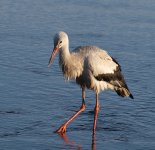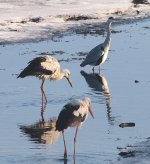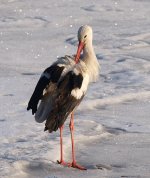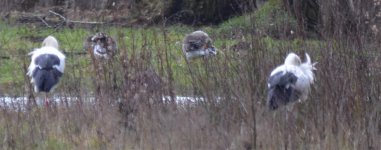Cristian Mihai
Cristian Mihai
Between December 24th 2014 and January 11th 2015 we had an interesting set of records for both Stork species, close to Bucharest. A Black Stork was spotted close to Chitila forest on December 24th 2014, on January 5th 2015 and again on January 11th 2015. On the other hand, on January 5th two White Storks were spotted in the same area. On January 7th one of the birds was seen again and on January 11th I found again both birds (see the pictures). It is important to mention that during this time the weather was rather harsh in Bucharest area, with a snow layer of about 20 centimeters and sometimes with minimum temperatures below minus 10 degrees Celsius.
Do you know a (general?) explanation for this type of situation? Why these birds didn't migrate?
Thank you for help.
Do you know a (general?) explanation for this type of situation? Why these birds didn't migrate?
Thank you for help.
Attachments
Last edited:








